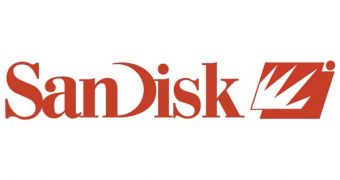SanDisk has just announced a breakthrough in its three-bit-per-cell NAND flash memory manufacturing process. This is not all, as the company is cooking yet another surprise: it will start production of 43-nanometer multi-level cell (MLC) NAND flash memory to replace its current 56-nanometer process.
The 43-nanometer MLC NAND flash technology will double the memory chips' density as compared to the current 56-nanometer 16Gb technology. It will also allow the company to cut production costs off, which would dramatically reflect into cheaper storage products, an important leap towards cheaper solid-state drives.
"We're excited about commencing the production ramp of the 43nm generation of MLC NAND flash memory with its significantly lower cost benefits," said SanDisk Executive VP of technology Dr. Randhir Thakur. "The 43nm technology generation will become our major focus during 2008 as we continue to provide leading-edge technology and cost benefits to our customers."
In order to switch to the 43-nanometer node, SanDisk will join Toshiba, its research and development partner for the new technology. The 43-nanometer, 16Gb chips will become available on the market in the second quarter of the year, while the larger 32Gb chips will emerge during the fourth quarter of 2008.
Moreover, SanDisk has announced important advancements in developing three-bit-per-cell NAND flash memory (x3). This technology will translate into 20% more die per wafer than traditional 56-nanometer MLC flash built on the two-bits-per-cell technology.
"We consider x3 as a major commercial breakthrough for flash memory that will extend Moore's Law in this and future generations of NAND flash storage," remarked Dr. Khandker N. Quader, SanDisk's senior vice president of flash memory design and product development.
The two companies estimated that the first commercial samples of their newly-achieved X3 NAND flash memory will hit the market during March or April this year.

 14 DAY TRIAL //
14 DAY TRIAL //